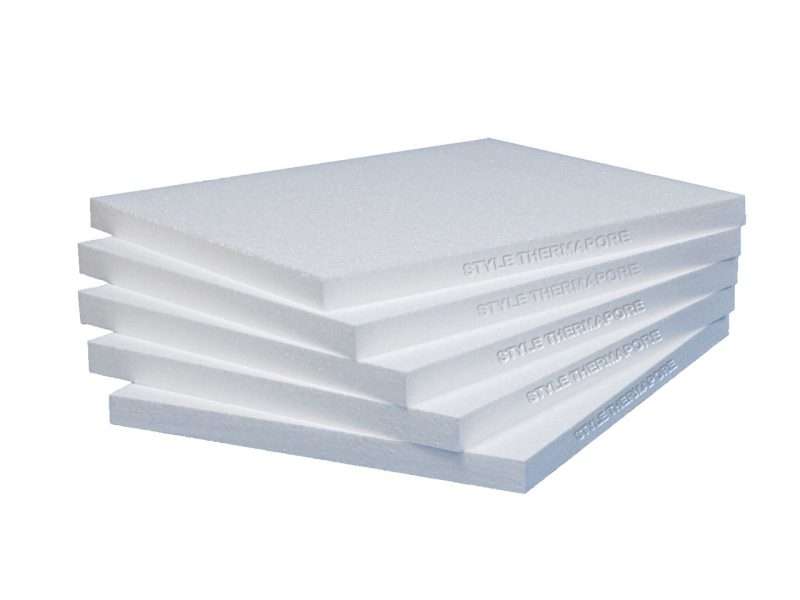
Explore the world of EPS thermocol and discover its versatile applications. Learn about the benefits of EPS packaging, its role in sustainability, and innovative uses beyond insulation. Join us on a journey through the remarkable possibilities of Expanded Polystyrene.
EPS Thermocol Overview
Expanded Polystyrene (EPS) thermocol is a versatile material that has found its way into various industries, thanks to its unique properties and adaptability. In this in-depth exploration, we will delve into the fascinating world of EPS thermocol. From its inception to its innovative applications, we will uncover the numerous facets of this remarkable material.
Benefits of EPS Packaging
EPS packaging has become the go-to choice for many industries, primarily due to its exceptional benefits:
- Shock Absorption: EPS’s ability to cushion and protect fragile items during transit is unmatched. It absorbs shocks, preventing damage to valuable goods.
- Thermal Insulation: EPS provides excellent thermal insulation, maintaining the temperature of goods during shipping, which is particularly vital in the food and pharmaceutical industries.
- Lightweight: Its lightweight nature reduces shipping costs, making it a cost-effective option.
- Customizability: EPS packaging can be moulded into various shapes and sizes to fit specific products, ensuring a snug and secure fit.
Custom EPS Solutions
The versatility of EPS extends to its customizability. Manufacturers can tailor EPS products to meet specific requirements. Whether you need packaging for delicate electronics, medical supplies, or industrial equipment, EPS can be moulded to your exact specifications. This customizability ensures that your products are well-protected during shipping and storage.
Recycling EPS for Sustainability
In a world increasingly concerned with sustainability, EPS thermocol has been scrutinized for its environmental impact. However, EPS can be recycled, and there are initiatives in place to reduce its environmental footprint. Recycling EPS involves compacting it into dense blocks that can be used in various applications, including picture frames and crown mouldings. This sustainable approach helps mitigate the material’s impact on landfills.
EPS in Insulation
EPS’s insulating properties are not limited to packaging alone. It is a popular choice for building insulation. Its closed-cell structure traps air, creating an effective thermal barrier. This not only reduces energy consumption but also helps create a more comfortable indoor environment. EPS insulation can be used in walls, roofs, and foundations, enhancing a building’s energy efficiency.
EPS in the Food Industry
In the food industry, EPS plays a crucial role in preserving the freshness and quality of perishable goods. EPS food packaging containers, such as coolers and boxes, are prized for their ability to maintain consistent temperatures. This helps ensure that food products, pharmaceuticals, and vaccines remain intact and safe during transportation.
Disposing of EPS
While EPS is versatile and beneficial, disposing of it has presented challenges. Its lightweight and voluminous nature makes it less efficient to transport and process in landfills. However, recycling initiatives and advances in compacting EPS are addressing these concerns. Some regions even offer EPS drop-off locations for recycling, reducing the material’s environmental impact.
EPS: Lightweight & Durable
One of EPS’s standout features is its combination of lightweight and durability. Despite being exceptionally light, EPS maintains its structural integrity. This characteristic makes it a preferred choice for industries where weight reduction is critical, such as automotive and aerospace.
Creative EPS Uses
EPS thermocol isn’t limited to packaging and insulation. Its versatility allows for creative uses in art, sculpture, and stage design. EPS can be carved and shaped into intricate designs, making it a favourite material for artists and set designers seeking lightweight, yet visually striking, creations.
EPS in Construction
Beyond packaging and art, EPS has found a place in construction. As mentioned earlier, EPS insulation is a staple in energy-efficient buildings. But EPS’s role in construction doesn’t end there. It’s also used for architectural decorations, including mouldings and columns, adding aesthetic value to structures.
Innovations in EPS
Innovations in EPS continue to expand its applications. For instance, researchers are exploring ways to enhance its fire resistance, making it even safer for construction and other applications. Additionally, advancements in moulding techniques allow for more complex and precise designs, further broadening its potential uses.
Choosing EPS Products
When selecting EPS products, it’s essential to consider factors such as the specific application, required customization, and environmental considerations. Consulting with EPS manufacturers and experts can help you choose the right products for your needs, ensuring optimal performance and sustainability.
Sustainable EPS Options
For those concerned about the environmental impact of EPS, sustainable alternatives are emerging. Some manufacturers are developing bio-based EPS, which uses renewable resources, further reducing the carbon footprint. Additionally, recycling initiatives are growing, making it easier to responsibly manage EPS waste.
Conclusion
In conclusion, EPS thermocol is a versatile and adaptable material with applications ranging from protective packaging to construction and art. Its benefits, customizability, and potential for sustainability make it an appealing choice in various industries. As innovations continue to expand their potential, EPS thermocol’s role in our world is likely to evolve and expand further, meeting the demands of a sustainable and resource-conscious future.
